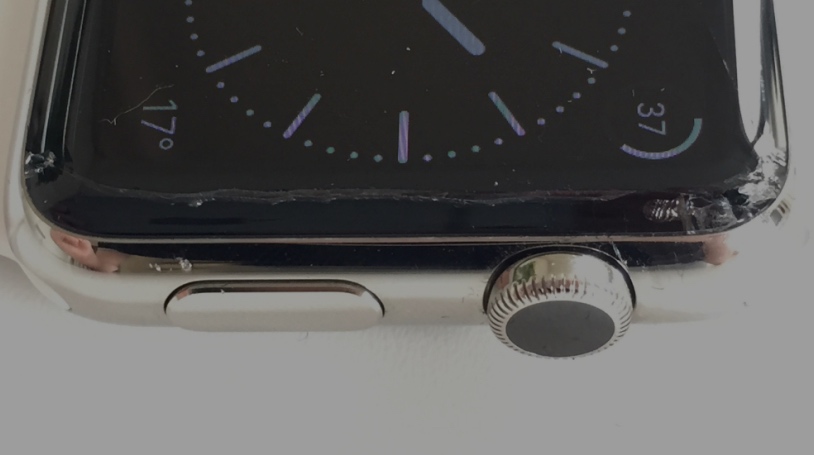
Sapphire Isn't As Durable As You Think
Apple’s made a big deal out of — and hawked a big upsell with — its hifalutin sapphire Apple Watch screens. The material is, after all, a luxury mainstay, and it is exceptionally scratch resistant. That’s why high-dollar watchmakers the world (read “Switzerland”) over always opt for the stuff, and its how folks (justifiably) justify its more premium price.
But sapphire isn’t invincible, and if you thought it was, you’ve fallen victim to a wrong idea. Chris Smith of BGR found out the hard way that yes, sapphire glass can shatter:
While walking towards our chosen path for this particular run, I explained why I wear the Watch on my right hand when running with weights. At the same time I decided to switch the Watch back to its regular position, since I realized I had forgotten my weights.
That’s when the white sport band slipped from my fingers as I was attaching the Watch, and gravity did its job. The device immediately plunged towards the concrete, and after a three-foot drop it landed on its display.
My friend was actually more worried than I was that something might have happened, but I reassured him that everything would be fine, as this Watch model has a sapphire display that’s shockingly difficult to crack. Then I picked it up from the ground to show him that the sapphire screen has survived the drop unharmed.
Boy, was I in for a surprise.
The Apple Watch is actually the first device with a screen that I accidentally cracked.
The snag in Smith’s thinking (which I assume mirrors so many others’ after all the Apple Watch hype) is that he conflated “difficult to scratch” with “difficult to crack.” Sapphire is famously hard to scuff up with abrasives. But it’s also incredibly easy to crack or shatter when subjected to direct impact. Apple Watch Sport’s Ion-X glass is far more shatter-resistant than the more expensive tiers’ sapphire coatings, but it’s a cheaper, lighter material that scratches a bit more easily, rendering it less ideal as a smartwatch ingredient. Smartwatches, after all, won’t be dropped facedown at near the rate that smartphones are, since they’re usually tethered to your wrist instead of loose in your hand (or purse or pocket). Drop accidents are such a non-issue that you don’t even need an Apple Watch case, remember? (Except for when, like Smith, you do.) Scratch resistance, on the other hand, is far more important for a wrist-mounted wearable, as you’re far more likely to rub your Apple Watch against gritty fabrics or drag it momentarily across rough surfaces and so on.
There’s a reason why Apple passed on sapphire iPhone screens. Per Tim Bajarin, writing for TIME in 2014:
Durability
This is by far the most promoted benefit of sapphire, and perhaps the most misunderstood. This is the area I got tripped up by assuming too much from Apple’s investment in GT Advanced. Sapphire is extremely hard, which is to say highly scratch resistant. That is why it is found on products such as luxury watches. It is largely untested on phone screens, though. In fact, sapphire is a crystal that is very hard, but inflexible and extremely brittle. Sapphire’s inherent structure makes it susceptible to flaws that can occur along the crystal plane. I was told by multiple sources that various field tests subjected sapphire to scratch and break tests against strengthened glass. It performs better on scratch resistance, but when you drop it, it is more likely than glass to break. Glass actually flexes and can absorb the shock of a drop more successfully than sapphire.
For some readers, this is probably common sense. I’ve written about it before, and I’m sure I’ll write about it again. But for now, it’s important that everyone understand one thing about Apple Watch: If you’re using it for sports, it’s probably smarter to buy the Sport.
[Image via BGR. Visit the source for more carnage.]